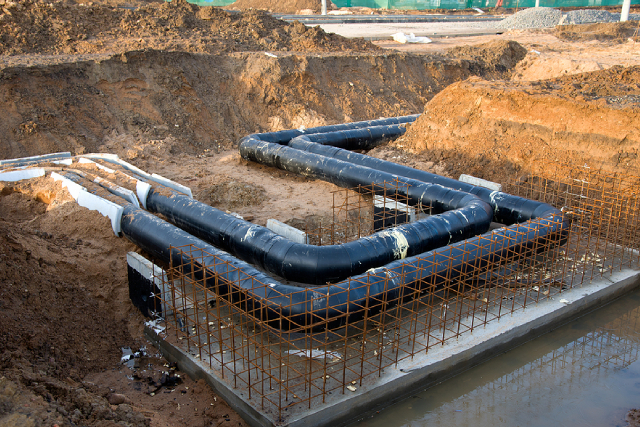The Edge Of Smart Pumping: How It Optimises Sewer Networks

Nearly every country in the world is currently facing a sewage problem. The evolving populations and increasingly unpredictable weather conditions are pushing aging sewer systems to the edge, allowing billions of gallons of combined sewage to be dumped into waterways every year or resulting in costly programs to lessen the environmental impact.
Due to the increasing number and growing complexity of the issues confronting wastewater engineers, more and more utilities are now seeking the help of “smart sewer” technology and smart hardware, such as dosing pumps or sensors, to optimise sewer networks without the need to establish new infrastructure.
In many cases, the results are pretty impressive. Read on to learn more about how smart pumping technology helps optimise sewer networks.
What is smart pumping?
Smart pumping is a digitally powered water pump that can visualise and interpret data using analytics, cognitive intelligence, machine learning algorithms, and Big Data. Smart pumps monitor, supervise, and provide real-time information on several factors, including the pump’s health status, performance, temperature, pressure, and the velocity of the water that passes through it.
Unlike conventional pumps that need manual checkups on pump performance and maintenance, smart pumps use computer technology and sensors to control, protect, and operate pumps and their systems. The smart pumping technology provides real-time diagnostic and early detection processes to examine equipment failures and abnormal operating conditions.
How does smart pumping improve sewer networks?
As sewage and water problems worsen, more and more utilities are now realising that conventional approaches to water infrastructure are not sufficient to solve a variety of significant issues like affordability and resilience to climate change. For this reason, wastewater engineers and water managers are turning to digital solutions, coupled with smart hardware, to help enhance network visibility and empower them to tackle crucial issues more affordably.
However, digital solutions are not one-size-fits-all, and using them that way often results in delivering information that does not usually account for complete situational and operational data. Consequently, data-rich utilities struggle to unlock helpful guidance and operational visibility at scale. Now, this is where the advantage of smart sewer technology comes in.
By using a combination of sensors, various situational and asset data, and digital twin technology that enables the formulation of highly accurate predictions, sewer network optimisation technology allows unparalleled visibility and opportunity for systematised control.
These smart solutions are currently helping utilities worldwide to significantly minimise sewer overflows, reduce flooding events, detect sewer blockages, determine sources of inflow and infiltration, and optimise functionality to guarantee regulatory compliance while lessening energy consumption at the same time. By using these solutions, utilities can also minimise the need for expensive bleak infrastructure in the future.
Learning from the Cases of Buffalo City and City of Grand Rapids
As mentioned earlier, smart pumping technology is now being increasingly used to solve various sewage and water problems around the world. One good example is the case of the City of Buffalo, New York. In the past years, the city was experiencing billions of gallons of combined sewer overflows (CSOs) every year.
With the use of smart technology and the combined efforts of engineers and consultants, what used to be a system of open flow gravity sewers in the City of Buffalo has become an inline storage system and a coordinated conveyance. Moreover, by deploying a system for wastewater network optimisation, the city effectively reduced CSOs by about 450 million gallons in the first year alone.
Similarly, the City of Grand Rapids in Michigan also utilised smart sewer technology to understand how the city’s sewer separation behaved, replicating the performance in a computer environment to predict better how the system would perform with less costly enhancements to existing infrastructure.
Before using smart technology, the City of Grand Rapids was presented with a solution to mitigate and eliminate the excessive surcharging and flooding in their areas that approximately cost as much as $1 billion. However, the city knew it could not afford such a huge capital expense. So, it turned to smart technology to gather more information about its sewer networks and develop other less costly solutions.
After a complete investigation using smart sewer technology, the City of Grand Rapid was able to conclude that, by concentrating on a few crucial areas needing improvement, they could solve its inflow and infiltration problems for around $30 to $50 million only as opposed to the initially proposed $1 billion.
Conclusion
By utilising smart pumping technology and upgrading existing sewer systems, huge operational, environmental, and sustainable benefits are being achieved by wastewater engineers and water managers worldwide. Ultimately, this proves that smart technology has become unstoppable now.
For instance, various industries are already embracing smart technology in their sensors and air compressors in Singapore for its numerous benefits. This is an indication that smart solutions will soon become the default in various industries, including the incorporation of smart technology in appliances like high pressure washers in Singapore.

